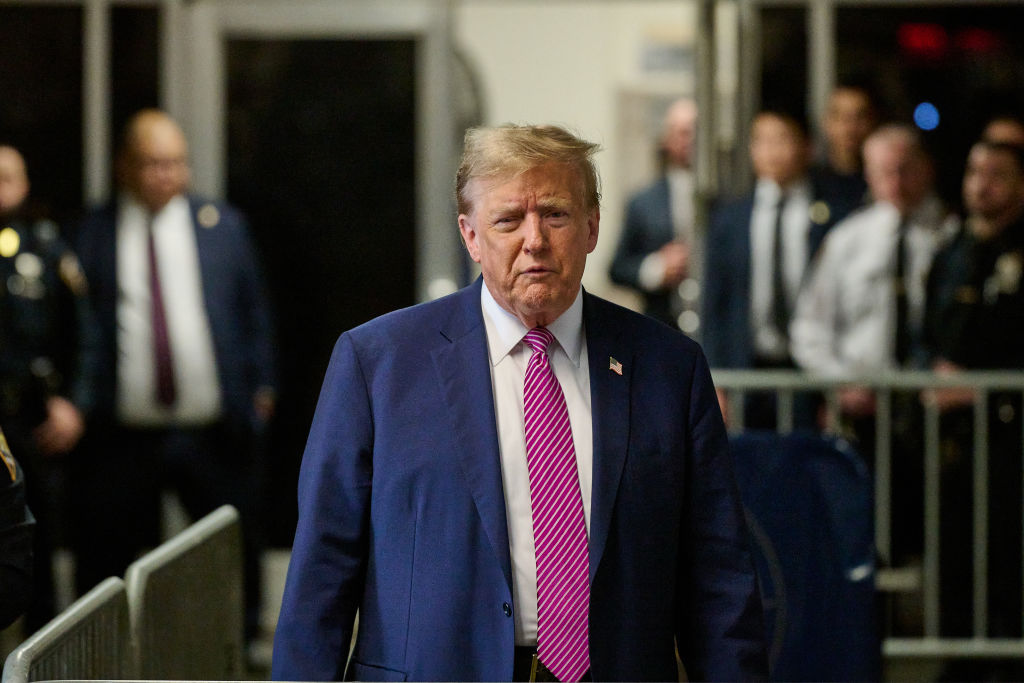Wall Street had another astounding advance Tuesday, with the Dow Jones industrials soaring nearly 900 points in their second-largest point gain ever as late-day bargain hunters stormed into the market. The Dow and the Standard & Poor’s 500 index were each up nearly 11 percent.
There didn’t appear to be any one catalyst for the surge that saw the Dow nearly double its gain in the last hour of trading. Many analysts said investors were grabbing up stocks in the belief that the market had fallen too far in recent sessions; the Dow had dropped 500 points in two days. Some said buying early in the day came from anticipation of an interest rate cut Wednesday by the Federal Reserve, and the market just followed its recent pattern of building on its gains or losses in the last minutes of the session.
“There is nothing fundamental that came out today or yesterday that would take it up or down. We’re all groping for something meaningful to talk about,” said Bob Andres, chief investment strategist at Portfolio Management Consultants. “The market is exhausted from going down.”
But given the relentless volatility in the market — out of 20 trading days this month, there have been only two that didn’t see the Dow close up or down in triple digits — no one expects that the market is now headed higher for good. After Wall Street’s devastating losses that slashed 2,400 points off the Dow in eight sessions, market veterans warned that the recovery would rocky, including huge gains followed by huge declines.
“I don’t think it will be a sustained move,” said Matt King, chief investment officer at Bell Investment Advisors, of Tuesday’s surge.
It was clear that investors wanted to buy — they looked past news of a sharp drop in consumer confidence early in the session. The Conference Board said its index of consumer confidence has fallen to 38 in October, well below the 51 analysts expected.
According to preliminary calculations, the Dow rose 889.35, or 10.88 percent, to 9,065.12. That was its second-largest point gain, coming after the 936 points the Dow jumped on Oct. 13.
The Dow was up 456 points at 3 p.m. and rose as much as 906.31 before edging back.
The gains in the 30 blue chip stocks were stunning — Alcoa Inc. was up 19.25 percent, while Verizon Communications Inc. rose 14.63 percent. Even oil stocks shot higher, withstanding another drop in the price of crude — Exxon Mobil Corp. and Chevron Corp. each rose more than 13 percent.
Broader stock indicators also surged. The Standard & Poor’s 500 index rose 91.59, or 10.79 percent, to 940.51, and the Nasdaq composite index rose 143.57, or 9.53 percent, to 1,649.47.
The Russell 2000 index of smaller companies rose 34.15, or 7.62 percent, to 482.55.
Advancing issues outnumbered decliners by more than 4 to 1 on the New York Stock Exchange, where volume came to a moderate 1.72 billion shares compared with 1.34 billion shares traded Monday.
“I guess we’re just coming out of this oversold situation. I think you’ve got a lot of players on the sidelines,” said Dan Demming, trader at Stutland Equities in Chicago. “There’s just no one standing in the way right now.”
He contends investors are also anticipating an interest rate cut. The Fed is expected to cut its target fed funds rate by half a point to 1 percent.
Bond prices were mixed as some investors looked for the safety of government debt. The yield on the three-month Treasury bill, regarded as the safest investment around and an indicator of investor sentiment, fell to 0.76 percent from 0.77 percent Monday. The lower yield indicates an increase in demand. Meanwhile, the yield on the benchmark 10-year Treasury note rose to 3.86 percent from 3.69 percent late Monday.
The dollar was mixed against other major currencies, while gold prices fell.
Light, sweet crude settled down 49 cents to settle at $62.73 a barrel on the New York Mercantile Exchange.
Investors worldwide snapped up stocks after posting huge declines Monday on economic worries. Japan’s Nikkei stock average jumped 6.41 percent and Hong Kong’s Hang Seng index surged 14.4 percent — its biggest gain in 11 years — a day after plunging more than 12 percent. Britain’s FTSE 100 rose 1.92 percent, Germany’s DAX index jumped 11.3 percent, and France’s CAC-40 rose 1.55 percent.
The disruptions in the normal flow of the credit markets over the past six weeks have produced widespread worries about the economy’s ability to avoid a severe downturn. The evaporation in lending is making it difficult and more expensive for businesses and consumers to get loans.
But Monday saw the start of the Fed’s efforts to revive lending in the commercial paper market, where companies turn for short-term loans. General Electric Co., for example, has said it would borrow money from the government. The Treasury has also begun to implement part of the government’s $700 billion financial bailout plan by investing directly in some banks to give them a much-need source of fresh cash.
The government’s extraordinary moves to help support borrowing and restore market confidence come as unease about the economy has buffeted trading. Some of Wall Street’s gyrations since the mid-September bankruptcy filing of Lehman Brothers Holdings Inc. and the subsequent seizing up of the credit markets are tied to massive selling by hedge funds and mutual funds trying to raise cash for nervous investors.
On Monday stocks fell sharply in the final minutes of the session, with the Dow giving up 200 points. Tuesday’s gain seemed as puzzling to some observers.
“It makes just as much sense as yesterday’s 200 point drop in 10 minutes,” said Arthur Hogan, chief market analyst at Jefferies & Co. He did say, however, that there was a “smattering of good news” that appeared to help boost stocks Tuesday.
One was the dollar’s massive rally against the yen, Hogan said, a signal that the “indiscriminate selling” by hedge funds might be hitting a plateau. Hedge funds often borrow yen to fund investments in higher-yielding currencies; recently, they’ve been forced to sell assets raise cash, so they have been buying back yen and boosting its value. That weighed on global markets on Monday.
The dollar leaped to 97.68 Japanese yen in late New York trading Tuesday from 93.93 yen late Monday.
“Was there enough good news to warrant a 10 percent rally? No,” Hogan said. “But you put things in perspective — this is a rally amidst a very difficult market.”
Wall Street’s jump came as fallout from credit market troubles popped up around the globe. Iceland’s central bank on Tuesday raised its key interest rate by an enormous 6 percentage points to 18 percent. Iceland has seen its currency tumble after its banking sector collapsed this month. Prime minister Geir Haarde said separately on Tuesday that the country will require $4 billion in financial support in addition to the $2 billion loan package announced by the IMF.
Meanwhile, Germany’s foreign minister said Tuesday that Pakistan must secure a loan from the IMF within a week to avoid sliding into a financial crisis.
















